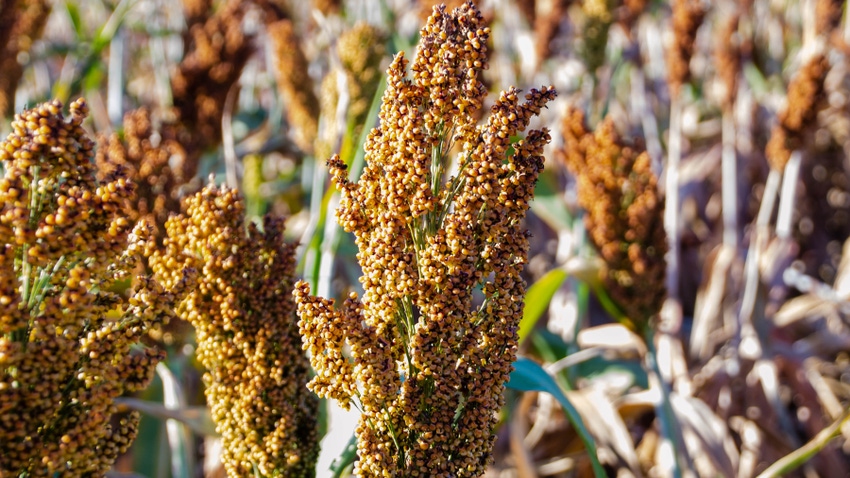August 7, 2023

It’s that time of year again. It’s hot. It’s dry (maybe a little less dry than it was a couple months ago, but I’m sure most readers would welcome more rain). Wells are either already running or farmers are preparing to start them. Given this, I thought it would be a good time to talk irrigation.
While it’s too late for wholesale practice changes in 2023, it’s never too late to start looking to next year. And with the need to be more efficient with the water we have left, it wouldn’t hurt to start looking at the next decade. Fortunately, with its lower water requirements, sorghum is an increasingly smart choice for water-limited environments.
Reduce tillage
First, because no-till and reduced tillage systems maintain crop residue on the soil surface, they make better use of moisture than more intensive tillage systems. While these systems aren’t for every farmer or situation, they do reduce evaporation, hold soil moisture and improve water infiltration. Similarly, narrow-row planting patterns provide shade to the soil and minimize water loss through evaporation. Finally, shorter-maturing hybrids can reduce water requirements without sacrificing yield. When combined, these practices significantly enhance irrigation efficiency and maximize the use of available water resources.
Time the crop right
Strategic planning is crucial for minimizing water stress during sorghum cultivation. Early planting enables crops to establish themselves during periods with lower temperatures, optimizing water absorption and reducing the risk of high-temperature-induced water demand. Another consideration is the implementation of cropping systems that incorporate fallow periods. For example, a wheat-sorghum-fallow rotation allows for the capture and use of rainfall efficiently. During the fallow period, the soil can replenish moisture levels, reducing the reliance on irrigation. I know it sounds crazy on irrigated acres, but farmers should remember that stretching too few gallons across too many acres leads to significant inefficiency, and this inefficiency could outweigh the lost revenue associated with a fallow period. Every situation is different, but it is something for farmers with dwindling water supplies to consider.
Use technology
The integration of advanced agricultural technologies empowers farmers to monitor and manage irrigation water more effectively. Monitoring soil moisture levels using capacitance probes, time domain reflectometry (TDR), tensiometers or electrical resistance sensors provides valuable data for informed irrigation decisions. By combining these data-driven approaches with water balance methods, farmers can optimize water usage by considering factors such as initial soil moisture, rainfall, and daily evaporation and transpiration rates. For those readers intimidated by these technologies and the practice changes they require — rest assured, you’re not alone! Fortunately, there are a few very knowledgeable High Plains crop consultants who would relish the opportunity to help farmers deploy the right technologies, and I would be happy to facilitate conversations with any farmers who are interested.
To kick the level of sophistication up another notch, the adoption of cutting-edge technologies such as plant sensors and remote sensing enhances farmers’ ability to accurately gauge crop water needs. By monitoring sap flow, canopy temperature and growth patterns, farmers can fine-tune irrigation schedules, ensuring water is applied precisely when and where it is needed. Remote sensing, satellite imagery and drones provide real-time, field-level information, enabling precise irrigation management based on specific crop requirements.
Back to basics
Farmers can also make a positive impact on water availability by employing less flashy, more tried-and-true conservation methods. These include variable-rate irrigation, upgrading from pivot irrigation to subsurface drip systems and even transitioning from mid-elevation spray application (MESA) to low elevation spray application (LESA) or low energy precision application (LEPA), preferably with drag socks or hoses.
Finally, farmers should remember that sustainability isn’t so much a destination as it is a journey. Positive steps in the right direction, no matter how small, lead to more sustainable production outcomes over time, and water is no exception.
Duff is founder of Serō Ag Strategies and serves as a consultant to National Sorghum Producers. He can be reached by email at [email protected] or on Twitter @sorghumduff.
About the Author(s)
You May Also Like






